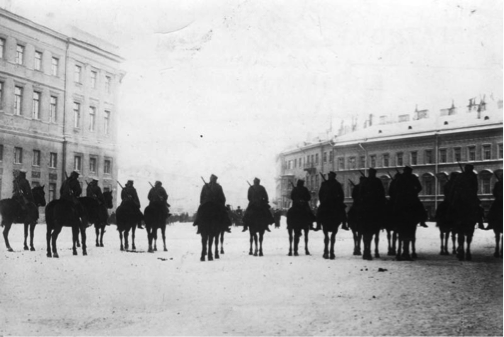In this section we will be exploring the 1905 revolution - asking why it happened and why it failed? Why was the Tsarist system able to survive the revolutionary challenges of 1905? To what extent did the revolution fail because of its own internal divisions? And what did the revolutionary parties learn from 1905? In this section you will find some answers to these questions. You will aklso find some extracts from books, photographs from 1905, a video film, and my suggestions on what else to read. Register here to get information on accessing more materials including my responses to exam questions on these themes.

Tsarist troops in St Petersburg, 1905
The Russian revolution did not start with the peasantry or the industrial working class. Read more...
The constitutional movement was a prelude to the 1905 Revolution, which was sparked by a massacre of workers on Palace Square in St Petersburg on 9 January - 'Bloody Sunday' as it became known. Read more...
In that one vital moment the popular myth of a Good Tsar which had sustained the regime through the centuries was suddenly destroyed. Read more...
There was a wave of strikes in protest against the massacre. In January alone, more than 400,000 workers downed tools across the country, the largest ever labour protest in Russian history. Read more...
With the Russian Empire teetering on the brink of collapse, the tsarist regime responded to the crisis with its usual incompetence and obstinacy. Read more...
The organization of the general strike owed much to the Soviet of Workers Deputies established in St Petersburg on 17 October. Read more...
The Manifesto's proclamation was met with jubilation in the streets on 17 October 1905. Read more...
During 1905 there was a marked increase in the level of organisation and militancy of the workers' strikes and protests. Read more...
With the social revolution deepening, the Social Democrats resolved to stage an armed uprising in Moscow. Read more...
Although the tsarist regime had been shaken, it was not brought down. The reasons are clear enough. Read more...
Here are some exam-like questions. Read more...
A recording of a lecture/class using primary documents. Read more...
A list of further reading. Read more...

